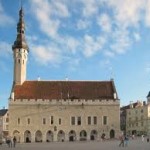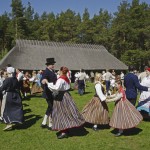About Tallinn
Tallinn, the capital of Estonia, is located in the northern part of the country on the coast of the Baltic Sea. Across the Gulf of Finland, 80 km north lies Helsinki, nearly 300 km to the east, St.Petersburg, and Riga is about the same distance to the south.
Due to its auspicious geographical location Tallinn has been a meeting point of the trading routes between east and west throughout the history. Finno-Ugric people settled in the Tallinn area more than 3500 years ago. In 1154 an Arabian geographer al-Idrisi marked Tallinn on his world map. In the beginning of 13th century Danish king Waldemar II conquered Tallinn and was followed by Swedish, German and Russian rulers. All of them influenced Tallinn’s architectural history that can be seen today in Tallinn’s compact and well preserved Old Town.
It is unique in Northern Europe and has been described on UNESCO’s World Heritage list. Romantic network of crooked cobblestone streets, two-kilometre long old city wall and twenty-six defence towers, churches and convents, the oldest apothecary still running in the worlds, passages and courtyards imposing merchants’ dwellings give a true medieval spirit underlying the Old Town to this day.
But not only is the Old Town worth visiting. The simple, sleek designs of recent buildings of the Tallinn „City“ represent the modern face of the town – up to date office buildings, banks, high quality hotels, conference centers, etc. The success of innovative applications of information and communication technology of Tallinn daily life has drawn world-wide attention. Tallinn’s culture has most in common with the European way of life, with affinities to both Scandinavian and German aesthetics and customs, but also drawing influences from the Slavic world.
Many annual events have become traditions such as the Old Town days, jazz, film and theatre festivals, beerfests and others, bringing visitors from near and far. Tallinn’s cultural life is young, lively, open and innovative. Small wonder, then, that a modern dance group considered only yesterday to be too radical in New York can perform today to a full house in Tallinn. Or a DJ just discovered to be making waves in London a week ago can be playing tomorrow evening in one of the Tallinn’s clubs.
If not interested in special events, one can spend hours exploring the numerous galleries and museums of Tallinn.
In addition, Estonia and Tallinn are one of the most wired-up – and wireless – places on the planet. Free Wi-Fi is widely available, everywhere from the airport to the beach.
Fans of folklore and traditional culture will not be disappointed either. Folk holidays are celebrated in traditional style, and folk dance and music can be enjoyed at Rocca al Mare Open Air Museum. The most impressive of all folk traditions in Tallinn are the National Song and Dance Festivals held every five years.
When eating, you can choose restaurants not just from the whole of Europe, but from all over the world. No matter whether you prefer your food to be Armenian or Argentinian or Turkish, African or Thai, Tallinn has them all. Enjoy these outside in the summer or in carefully designed cellars in the winter. The drinks are as varied, too but it would be a pity not to enjoy Estonian beer which goes down so well with any of these cuisines. Whichever restaurant you choose, the food will always be a pleasant surprise.


